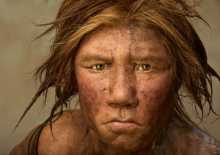An Ice Age, as one would expect, is creates an extremely inhospitable landscape for a very long period of time. As such, a small pocket of inhabitable space by a space, sustainable group of species over that time will have a massive impact on the evolution of life on the planet. These small pockets of hospitable space are called refugia (refugium, singular). Furthermore, as reported in io9, these refugia have very specific elements of natural selection and genetic drift. They are often very disconnected, and so a species that may have once been unified across a continent may emerge from the refugium, after thousands of years when the glaciers melt away, very different. This, according to the theory, explains the very fractured nature of the human species after the Ice Age.
The scientists John Stewart and Chris Singer believe that the Neanderthals were trapped within refugia in the northern climates of Europe and thus adapted to colder climate where there was less to subsist upon and provided less opportunity for social development (concerned as they were with simply surviving). However, Homo Sapiens (which would eventually become us) preferred more temperate climates that afforded greater nourishment, and more importantly space. With more space populations could grow larger and, as the glaciers melted away, provide more competition for Neanderthals as the species began to migrate once again.
One way of look at this, according to the scientists, is to think of Neanderthals as the polar bears of the human evolutionary tree. Modern polar bears are essentially an offshoot of the brown bear which were trapped in northern climates and forced to adapt in the colder environments. However, as the earth warms and the polar bears become endangered as their habitat shrinks, they are forced to evolve or die off. Luckily for Polar Bears, modern humans have a soft spot for endangered animals and tend to intervene in the kind of natural selection that lead to their Neanderthal cousins’ extinction.
